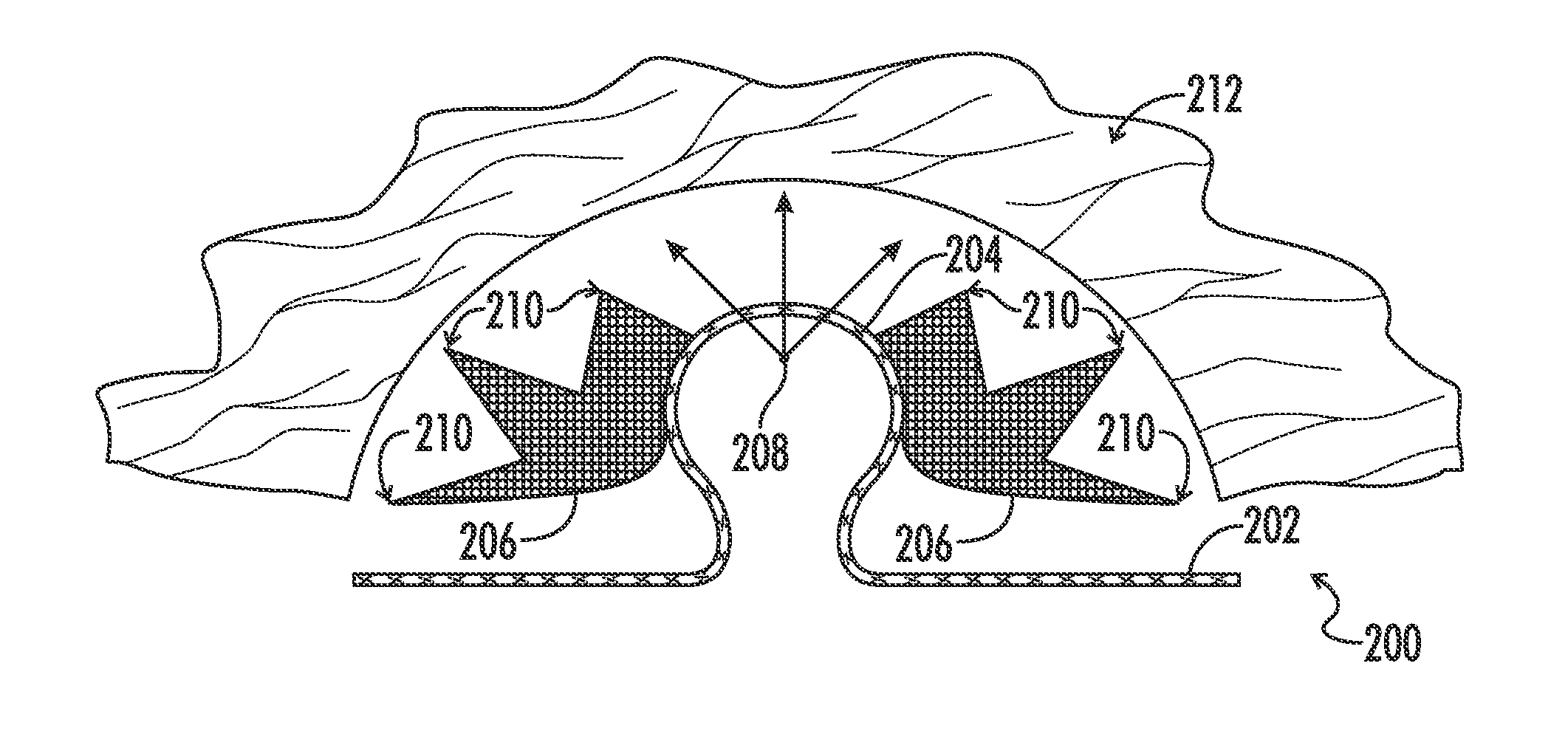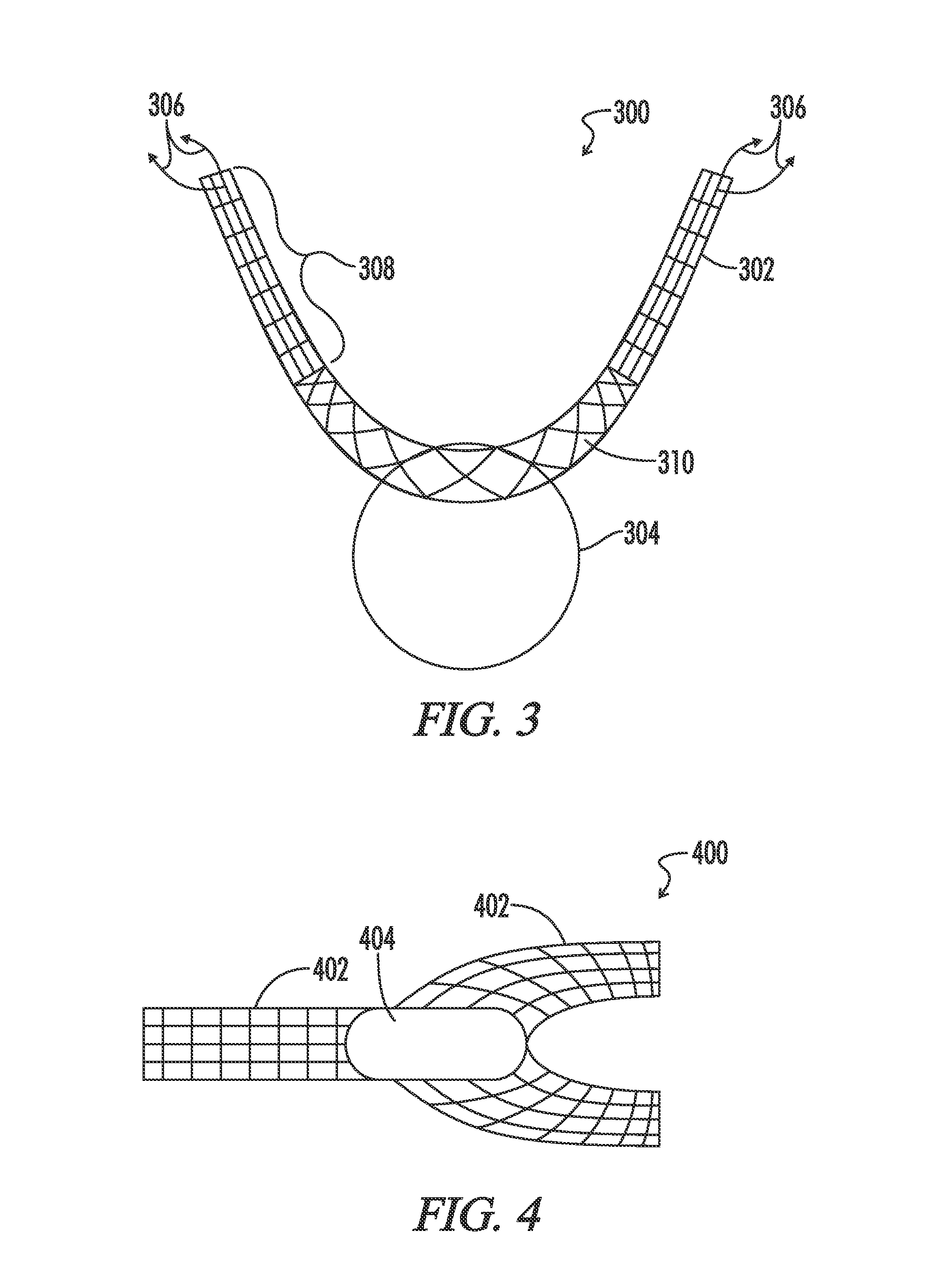Anti-erosion sorft tissue repair device
a tissue repair and anti-erosion technology, applied in the field of implantable medical devices, can solve the problems of weakening the support system, weakening the normal pelvic support system, etc., and achieve the effect of preventing the opening, tearing or rupture of an incision line, promoting the joining of the incision surface, and preventing the healing response of the incision
- Summary
- Abstract
- Description
- Claims
- Application Information
AI Technical Summary
Benefits of technology
Problems solved by technology
Method used
Image
Examples
Embodiment Construction
[0039]Reference now will be made in detail to the embodiments of the present disclosure, one or more examples of which are set forth herein below. Each example is provided by way of explanation of the embodiments of the present disclosure and is not a limitation. In fact, it will be apparent to those skilled in the art that various modifications and variations can be made to the teachings of the present disclosure without departing from the scope or spirit of the disclosure. For instance, features illustrated or described as part of one embodiment, can be used with another embodiment to yield a still further embodiment.
[0040]Thus, it is intended that the present disclosure covers such modifications and variations as come within the scope of the appended claims and their equivalents. Other objects, features and aspects of the present disclosure are disclosed in or are obvious from the following detailed description. It is to be understood by one of ordinary skill in the art that the ...
PUM
| Property | Measurement | Unit |
|---|---|---|
| Time | aaaaa | aaaaa |
| Time | aaaaa | aaaaa |
| Time | aaaaa | aaaaa |
Abstract
Description
Claims
Application Information
 Login to View More
Login to View More - R&D
- Intellectual Property
- Life Sciences
- Materials
- Tech Scout
- Unparalleled Data Quality
- Higher Quality Content
- 60% Fewer Hallucinations
Browse by: Latest US Patents, China's latest patents, Technical Efficacy Thesaurus, Application Domain, Technology Topic, Popular Technical Reports.
© 2025 PatSnap. All rights reserved.Legal|Privacy policy|Modern Slavery Act Transparency Statement|Sitemap|About US| Contact US: help@patsnap.com



